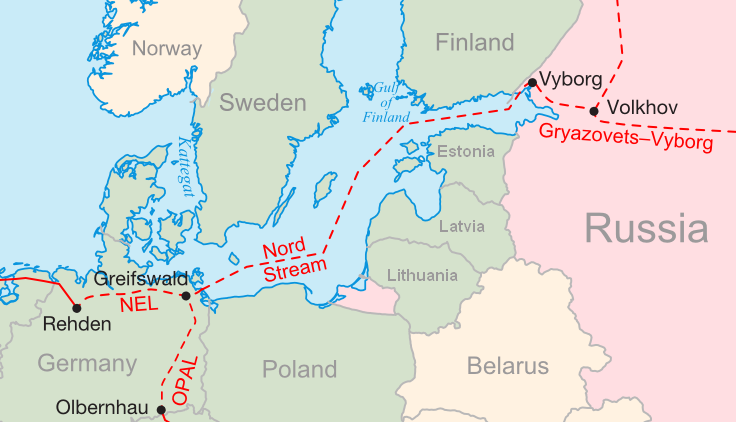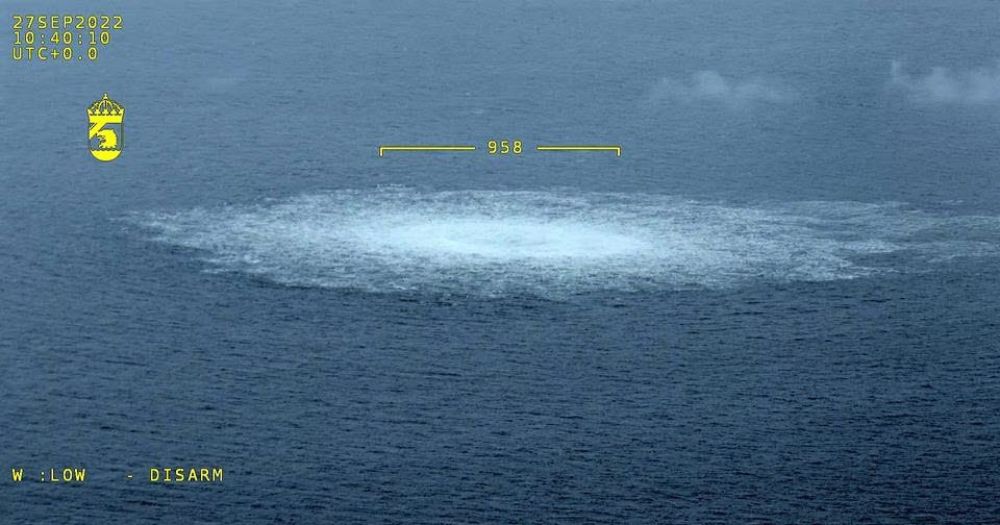Follow us on Telegram for the latest updates: https://t.me/mothershipsg
The leaks along the Nord Stream pipeline may pose as much risk to the climate as it has heightened geopolitical tensions between the West and Russia.
Earlier this week, leaks were found in multiple locations in the Baltic Sea along the pipelines which carried natural gas from Russia to Germany.
The Nord Stream pipelines, owned by Russian company Gazprom, stretch for 1,200km under the Baltic Sea and carries up to 170 million cubic metres of natural gas per day from Russia to Germany.
 Image via Wikimedia Commons.
Image via Wikimedia Commons.
Nord Stream 1 commenced operations in 2011, while a second planned pipeline, Nord Stream 2, was shelved in February this year following Russia's invasion of Ukraine.
Four leaks so far
A leak was first detected and confirmed on Sep. 26 by the Danish Energy Agency, before two more were discovered on Sept. 27.
A fourth leak has since been confirmed on Sep. 29.
#BREAKING Fourth leak detected at Nord Stream pipelines in Baltic Sea: Swedish Coast Guard pic.twitter.com/XvyCs46nyo
— AFP News Agency (@AFP) September 29, 2022
Gas not flowing but remains in pipes
According to the Swedish Coast Guard, one of the leaks measures 958 metres in diameter.
 Image via Swedish Coast Guard.
Image via Swedish Coast Guard.
While gas is not actively flowing through the pipelines, pressurised gas remains, with most of it being methane, Bloomberg wrote.
In 2021, gas from Russia accounted for 55 per cent of Germany's gas imports.
Since the war started, the Nord Stream pipelines have been an area of contention between the West and Russia.
Russia repeatedly reduced gas volumes and eventually stopped gas transport at the start of September, citing the need for maintenance.
300,000 to 500,000 tonnes of methane might be released
The exact amount of methane that will reach the surface of the ocean is unclear.
Some of it might be attenuated by bacteria as it rises up, Grant Allen, Professor at Manchester University and expert in Earth and environmental science, suggested to The Guardian.
However, with the speed at which the gas is rising to the surface, "methane will not have time to be attenuated by nature", Allen said.
Some experts suggest that as much as 500,000 tonnes of methane might reach the atmosphere, CBS wrote.
Bloomberg reported that Germany estimates around 300,000 tonnes of methane was released as a result of the leaks.
Head of Denmark's Energy Agency Kristoffer Böttzauw estimates that the methane emissions will equal 32 per cent of Denmark's annual greenhouse gas emissions, according to Bloomberg.
"We are talking about a huge spill of several million cubic meters of gas", CBS reported Böttzauw saying.
"We believe that half the gas is out by now of one of the two pipes," Böttzauw added.
Most of the remaining gas is expected to be released from the pipeline by Sunday, Oct. 2, Bloomberg wrote.
Each tonne of methane absorbs 28 to 34 times more heat than one tonne of carbon dioxide over a 100-year period, making it an extremely potent greenhouse gas.
In the first 20 years, however, methane can absorb heat 80 times more than carbon dioxide.
"There are a number of uncertainties, but if these pipelines fail, the impact to the climate will be disastrous and could even be unprecedented," said David McCabe, a senior scientist at non-profit Clean Air Task Force, told Reuters.
Climate efforts impeded by geopolitics
The Nord Stream incident demonstrates the difficulties of pressing on with climate efforts in the face of increasing global geopolitical tensions.
Minister for Sustainability and the Environment, Grace Fu, took note of these difficulties ahead of the upcoming United Nations Climate Change Conference (COP27), The Straits Times (ST) reported.
"I will try my very best to try to keep that topic on the agenda and keep reminding the countries that we should ramp (our efforts) up," said Fu at a Net-Zero dialogue on Wednesday (Sep. 21), according to ST.
"But I suspect that COP27 is not going to be so easy", she added.
Top image via Swedish Coast Guard.
If you like what you read, follow us on Facebook, Instagram, Twitter and Telegram to get the latest updates.
